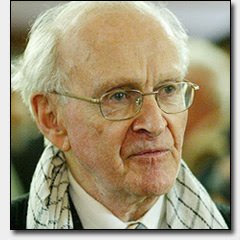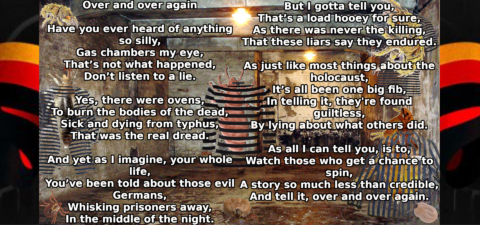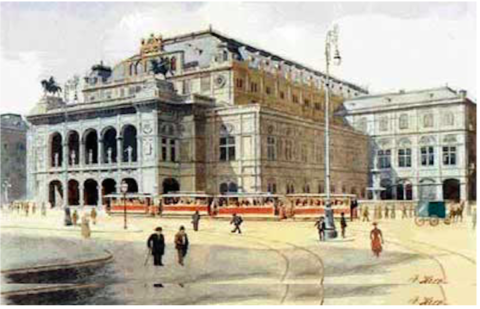Johann “Hans” Peter Baur was born in Ampfing, Germany on June 19, 1897. He died on February 17, 1993, and is buried in Munich. Hans seemed destined to spend much of his life among the clouds. As a German volunteer, he became a very young pilot during World War I. Hans was employed as a commercial pilot after the war came to an end.
Due to his vast flying experience and safety record, Hans was brought to the attention of Adolf Hitler. He was to become Hitler’s personal pilot. In this capacity, Hans came into contact with some of the most important personages of the age.
In 1971, Hans wrote his autobiography in German. In 1986, it was translated into English and published by the Eichler Publishing Corporation. The book is entitled: Hitler at my Side. This book is certainly one of the most exciting books I have ever read. Hans exuded a zest for life and for dangerous adventure.
The author begins his narrative with his determination as a youngster to learn to fly airplanes. The reader is taken along with Hans on daring flights in those early fragile flying machines. Pilots flew them in freezing weather with few instruments to guide them and no oxygen to aid them. Hans details the evolution of the German airplanes and instruments from 1915 through 1945.
There were many significant people that went up in the air with Hans Baur as their pilot. In addition to German military officials, Hans piloted such anti-Communist leaders as King Boris of Bulgaria and Ion Antoneseu of Romania to confer with Hitler. Both of these men took a stand against the Bolsheviks and paid dearly.
The Preface explains what Hans hoped to accomplish in writing his autobiography: “When I made my memoirs public, I did not intend to make a great contribution to world history. My whole life was shaped by my passion for flying. For me, happiness lay between earth and sky, and the whine of the propeller was my music. The great and powerful men of the time were my passengers, and their safety was my foremost concern. Great men from the fields of science and art, crowned heads, and powerful politicians from many countries flew with me. Considering how they stand before the inexorable judgement of history is not my task.
“Therefore, this book is intended to be neither accusation nor justification. Nothing more is intended than to let the lights flare in the fullness of my memory and illuminate the episodes and experiences that seem noteworthy. In as far as they reflect the times and reveal the fates of people, then let them be a contribution to the history of the era. It is essentially my task to let my readers participate in the great flights that led me across mountains, valleys and national boundaries, in fair weather and foul.”
From pages 38 and 39: “Night landing in a potato field. Dear Reader, please pardon me for writing down so many individual experiences from the past, but they seem important to me in a time when people think in terms of speeds beyond the sound barrier and when they forget how incredibly problematic flying was just three decades ago.”
From page 41: “The year 1930 brought a decisive leap forward in technical development. Up to that time, every flight in clouds or thick fog was a risk. The devices indicating the orientation of the airplane, were very primitive, having originated during the World War……Many pilots, when forced to fly blind, had relied on the deceptive indicators and had crashed. In 1930, we received the artificial horizon for instrumental flight.”
Among his many awards, Hans received the Lewald Prize in March of 1932, along with two other Lufthansa flight captains. As he states on page 49: “This distinction was a very special honor for us, but more important for aviation was the fact that we had achieved an extraordinary safety record for that era on the most difficult routes in Europe including many hours of night flight, that German aviation had achieved such heights in spite of the restrictions imposed by the Treaty of Versailles, and that aviation had slowly won increased significance in the world and found general acceptance.”
Hans recorded some of Hitler’s idiosyncrasies such as being a vegetarian, abstaining from alcohol, and lacking empathy for sport fishing and hunting.
I was particularly fascinated with the flight that Hans took with his wife to South Africa. He flew from Germany along the eastern coast of Africa stopping along the way. This flight was made in order to deliver an airplane to South Africa. Hans was able to do some touring around even visiting the famous Krueger wildlife reserve.
While attempting to escape on foot from Berlin during the closing days of World War II, Hans was wounded four times. He was captured by the Soviets and suffered greatly due to his injuries and the subsequent amputation of his wounded leg. Hans was held in the Gulags for ten years. His wife died during his imprisonment.
The Soviets learned that Hans had been living in the Fuhrerbunker. They tormented him for years to determine if Hitler had been flown out of the country before the fall of Berlin. Hans was fully aware that Hitler along with several others had committed suicide rather than be captured by the brutal Soviet Bolsheviks.
Hitler at my Side, contains 228 pages with many photographs. It is available from The Barnes Review, P.O. Box 15877, Washington, D.C. 20003 for $25.00 plus shipping. Their telephone number is 1-877-773-9077. Hitler at my Side is an “awesome” autobiography by one plucky pilot.
Nancy Hitt – 2013
hunleyhitt@earthlink.net
Photo Hitler with his pilot, Hans Baur, in 1936. Hitler was very fond of Baur and Baur was 100% loyal to Hitler. Baur spent 11 years in a Soviet Gulag and had his leg amputated in Russian captivity with no anesthetic.




